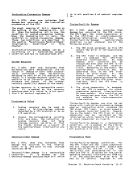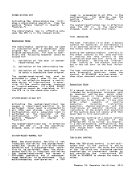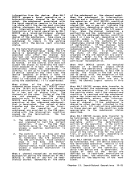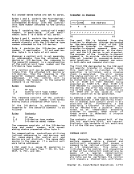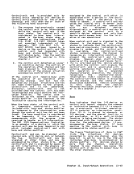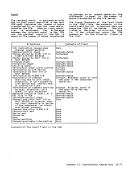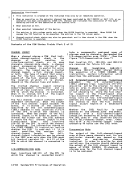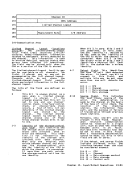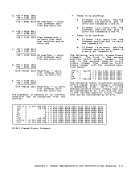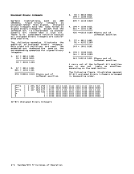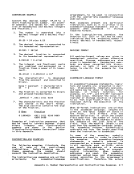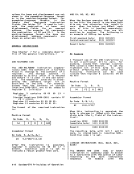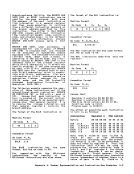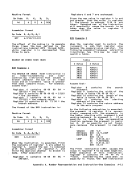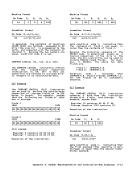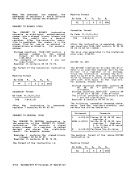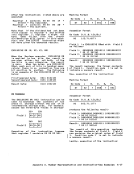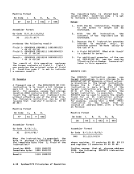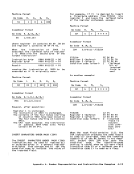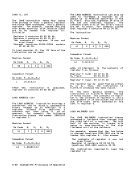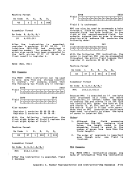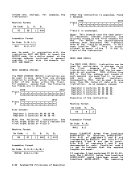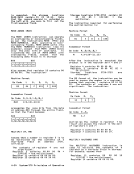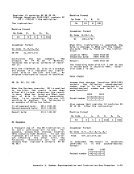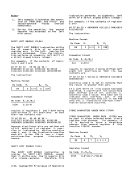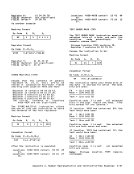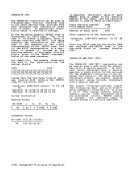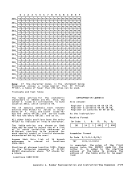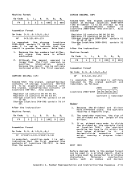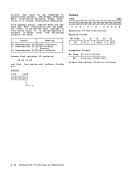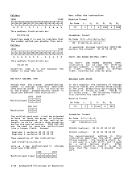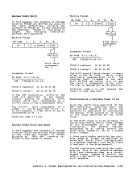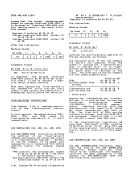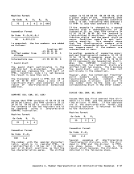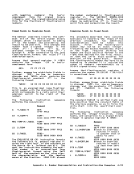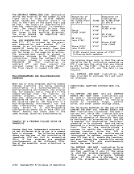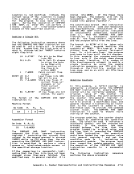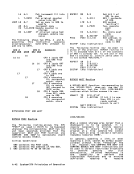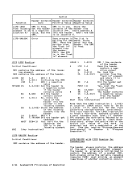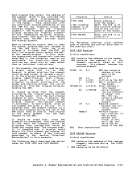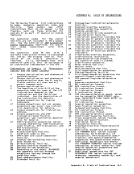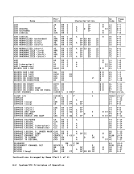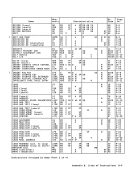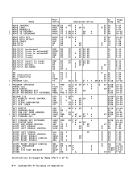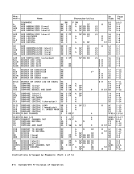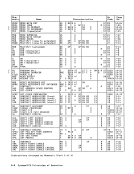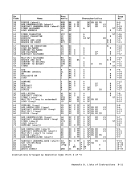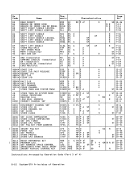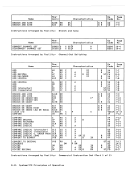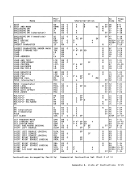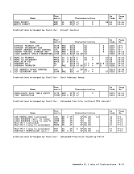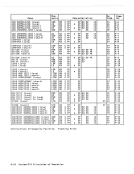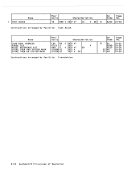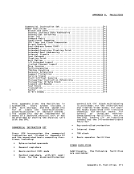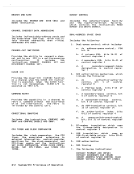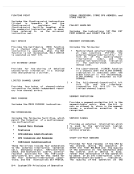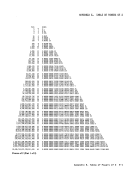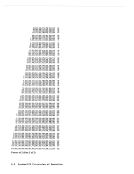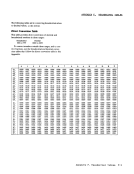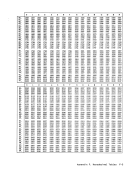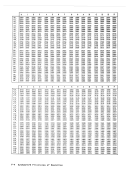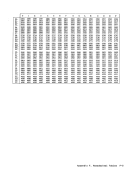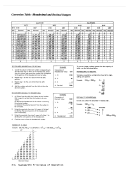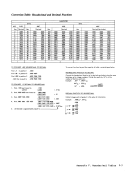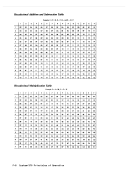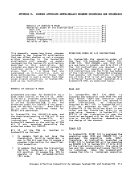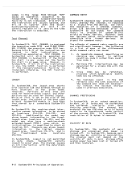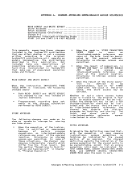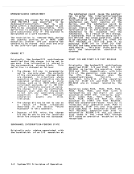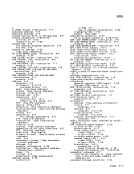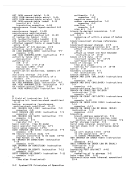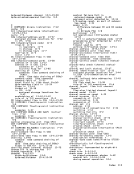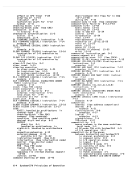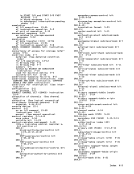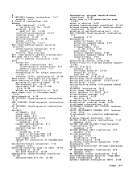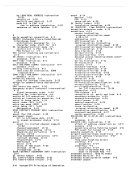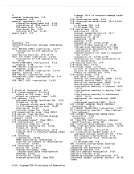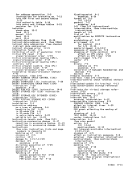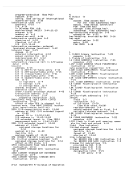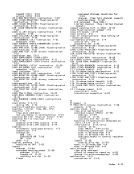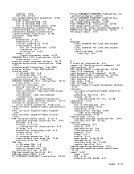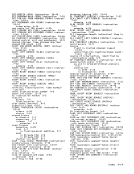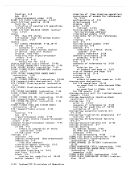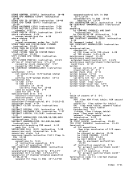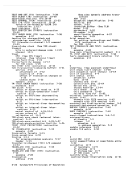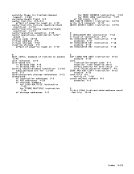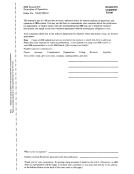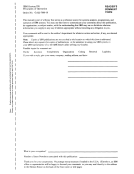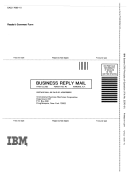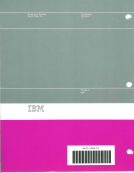APPENDIX ~ CHANGES AFFECTING COMPATIBILITY BETWEEN SYSTEM/360 AHD SYSTEM/370 Removal of USASCII-8 Mode ••••••••••••••••••••••••••••••• H-1 Operation Codes of 110 Instructions ••••••••••••••••••••• H-1
HaltI/O ..••••.•••••••••••..•••••••••••••••••••••••••. H-1
start1/0 ..•.•.••.•.••••••.•••.•••••.••••••••••••••.•• H-1
TestChannel ..•.•.•••••••••.••••••••.•••••••••••••.••• H-2
Logout..•.•...••....•.•••••••••••••••••••••..••••.••••.• H-2 Command Retry ..••...•••••.••••••••••••.•••••••••..•••..• H-2 Channel Prefetching .•••..•••••.•••••••.•••••••.••••••••. H-2
Validity of Data....••..•••..••••••••••••••••••••.•••••• H-2
This appendix summarizes those changes
included in theSystem/370 architecture
that may affect whether or not a program
written according to theSystem/360 architecture will operate on models
implementing theSystem/370 architecture
described in this publication. Not
included are descriptions ofSystem/370 functions which are compatible exten
sions, that is, (1) those that are
suppressed on initialization, such as
block multiplexing, and (2) those that
are specified in sucha manner that they
cause program exceptions onSystem/360, such as new instructions. REMOVAL OF USASCII-8 MODE System/360 provides for USASCII-8 by a
mode under control ofPSW bit 12. USAS CII-8 was a proposed zoned-decimal code
that has since been rejected. When bit
12 of theSystem/360 PSW is one, the
preferred codes forUSASCII-8 are gener
ated for decimal results. WhenPSW bit
12 is zero, the preferred codes forEBCDIC are generated.
InSystem/370, the USASCII-8 mode and
the associated meaning ofPSW bit 12 are
removed. InSystem/370, all
instructions whose execution inSystem/360 depends on the setting of PSW bit 12 are executed generating the preferred codes for EBCDIC. Bit 12 of the PSW is System/370 as follows:
handled in• • In models that do not have the
translation facility installed, a
one inPSW bit position 12 causes a
program interruption for specifica
tion exception.
In models that have the translation
facility installed, a one inPSW bit position 12 causes the CPU to
operate in the extended-control(EC) mode. OPERATION CODES OF I/O INSTRUCTIONS In System/360, the operation codes of
the fourI/O instructions (HALT 1/0, START I/O, TEST CHANNEL, and TEST 1/0) are one byte in length, and bits 8-15 of
theI/O instructions are ignored. In System/370, the operation codes of all I/O instructions are the first two bytes
of the instruction.System/360 programs
that executeI/O instructions in which
any of bits 8-15 is not zero may perform
a different function when executed on aSystem/370 CPU, as explained below.
InSystem/370, HALT I/O (HIO) is
assigned the operation code9EOO hex and
HALTDEVICE (HDV) the operation code 9E01. Because bits 8-14 are ignored in
both instructions, an instruction
executed as HALTI/O in System/360 will
still be executed as HALTI/O 1n System/370 if the third hex digit is any
value andthe fourth hex digit is an
even value. However, inSystem/370, if
bit 15 of the instruction is one, the
function performed will be theHIO func
tion or theHDV function, depending on
the design of the channel.
InSystem/370, START 110 is assigned the
operation code9COO and RESUME 1/0 is
assigned the operation code9C02. Therefore, an. instruction executed as START 110 in System/360 will be executed
asRESUME 110 in System/370 if bits 8-15
of the instruction contain the value02 hex and the suspend-and-resume facility
is installed. When the suspend-and
resume facility is installed, operationChanges Affecting Compatibility between System/360 and System/370 H-l
Halt
start
Test
Logout
Validity of Data
This appendix summarizes those changes
included in the
that may affect whether or not a program
written according to the
implementing the
described in this publication. Not
included are descriptions of
sions, that is, (1) those that are
suppressed on initialization, such as
block multiplexing, and (2) those that
are specified in such
cause program exceptions on
mode under control of
that has since been rejected. When bit
12 of the
preferred codes for
ated for decimal results. When
12 is zero, the preferred codes for
In
the associated meaning of
removed. In
instructions whose execution in
handled in
translation facility installed, a
one in
program interruption for specifica
tion exception.
In models that have the translation
facility installed, a one in
operate in the extended-control
the four
the
of the instruction.
that execute
any of bits 8-15 is not zero may perform
a different function when executed on a
In
assigned the operation code
HALT
both instructions, an instruction
executed as HALT
still be executed as HALT
value and
even value. However, in
bit 15 of the instruction is one, the
function performed will be the
tion or the
the design of the channel.
In
operation code
assigned the operation code
as
of the instruction contain the value
is installed. When the suspend-and
resume facility is installed, operation











































































































































































































































































































































